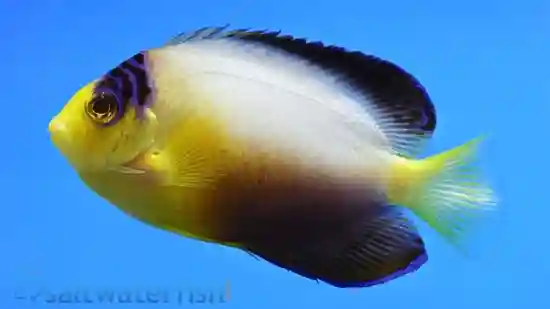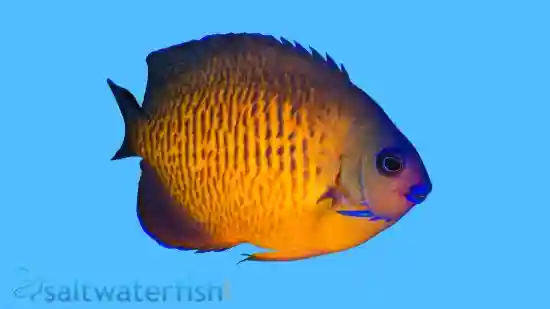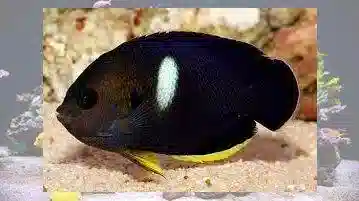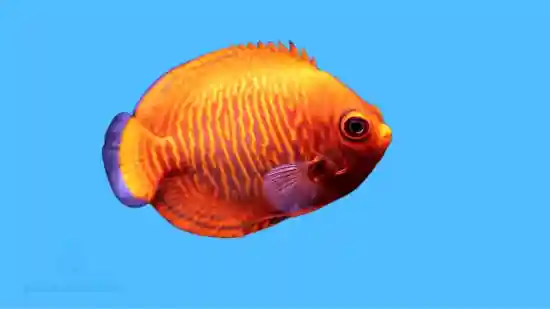Expert Only
Golden Angelfish
Centropyge aurantia
(1 Reviews)
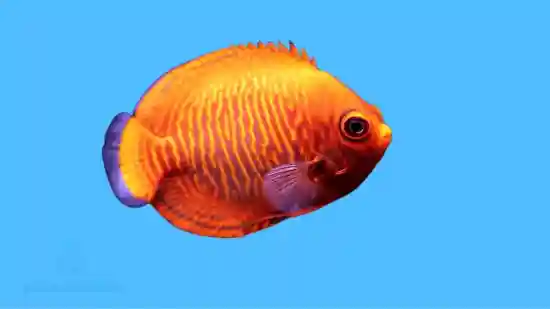
Expert Only
Golden Angelfish
Centropyge aurantia
(1 Reviews)
{{ item.name }}
Size: {{ item.extra_field_3 }}
${{ getFormattedPrice(item.saleprice) }} ${{ getFormattedPrice(item.price) }}
To join the waiting list, click here
Free Shipping
With
$199.00
or more in Marine Life.
More details...
Golden Angelfish Care Facts
| Care Level: | Expert |
|---|---|
| Temperament: | Peaceful |
| Diet: | Omnivore |
| Reef Safe: | No |
| Minimum Tank Size: | 55 gallons |
| Max Size: | 4 inches |
Keeping the Golden Angelfish (Centropyge aurantia)
The Golden Angelfish (Centropyge aurantia) is a striking and vibrant marine species that has captured the fascination of saltwater aquarium enthusiasts. This comprehensive guide provides essential information for those considering the addition of the Golden Angelfish to their aquarium. Topics covered include habitat, reef compatibility, size, lifespan, dietary needs in captivity, aquaculture availability, compatibility with other marine inhabitants, sexual dimorphism, coloration changes from juvenile to adult, temperament, tank requirements, and precise water conditions. Additionally, we'll explore common names for this species and practical reasons to consider purchasing the Golden Angelfish from Saltwaterfish.com.
Habitat and Natural Range of the Golden Angelfish
The Golden Angelfish is native to the warm, tropical waters of the Pacific Ocean, specifically in the waters surrounding Fiji, Vanuatu, New Caledonia, and the Solomon Islands. In its natural habitat, it thrives in coral-rich environments and is often found in rocky crevices and coral outcroppings. To provide optimal care for this species, it's essential to replicate its natural habitat within the aquarium.
Reef Compatibility of the Golden Angelfish
When assessing the reef compatibility of the Golden Angelfish, it's important to note that it is not considered reef-safe. The Golden Angelfish typically significantly threatens corals and other sessile invertebrates.
Size and Lifespan of the Golden Angelfish
Golden Angelfish are known for their compact size, making them suitable for a range of aquarium setups. They typically reach a maximum length of about 4 inches (10 centimeters) in captivity. Despite their small stature, they have a relatively long lifespan, often living for ten years or more when provided with proper care.
Diet in Captivity of the Golden Angelfish
Feeding the Golden Angelfish in captivity is relatively straightforward. Their diet should include:
- High-Quality Marine Pellets: Incorporate high-quality marine pellets into their daily feeding regimen to ensure they receive essential nutrients.
- Frozen Foods: Supplement their diet with frozen foods such as brine shrimp, mysis shrimp, and other marine preparations to provide variety and essential proteins.
- Vegetable Matter: Include marine algae and vegetable matter, such as seaweed sheets, to mimic their natural herbivorous tendencies.
Aquaculture and Availability of the Golden Angelfish
The Golden Angelfish is occasionally available through aquaculture efforts, although their availability can be limited. To determine current availability, it is advisable to check with reputable suppliers like Saltwaterfish.com. Most specimens are wild-caught. Choose a supplier that utilizes responsible collection methods.
Compatibility with Other Fish and Invertebrates
The Golden Angelfish is generally considered peaceful and can coexist with various tankmates. Here are five compatible tankmates:
- Clownfish (Amphiprion spp.): Clownfish are known for their peaceful nature and can make excellent companions for Golden Angelfish.
- Firefish Goby (Nemateleotris spp.): These small, colorful gobies are peaceful and can share a tank with Golden Angelfish.
- Chromis (Chromis spp.): Chromis species are schooling fish that add lively movement to the aquarium and coexist well with Golden Angelfish.
- Dwarf Angelfish (Centropyge spp.): Many dwarf angelfish species can be compatible with Golden Angelfish, provided sufficient space exists.
- Cleaner Shrimp (Lysmata amboinensis): Cleaner shrimp can help maintain the health of your aquarium by removing parasites from fish.
Sexual Dimorphism of the Golden Angelfish
The Golden Angelfish does not exhibit significant sexual dimorphism, making it challenging to distinguish between males and females visually.
Juvenile to Adult Coloration Changes
Juvenile Golden Angelfish are distinguished by their vibrant yellow coloration and striking electric blue outline on their dorsal fin and tail. As they mature into adults, their bodies take on a deeper golden hue, and their blue outlines become even more prominent. This transition results in the breathtaking and iconic appearance that gives them their name.
Temperament of the Golden Angelfish
The Golden Angelfish is generally peaceful and well-suited for community aquariums. However, like all fish, individual personalities may vary, so monitoring their interactions with other tankmates is essential.
Tank Requirements for the Golden Angelfish
To provide the best environment for your Golden Angelfish, adhere to these tank requirements:
- Minimum Aquarium Size: A tank with a capacity of 55 gallons (113 liters) is suitable for a single Golden Angelfish. Larger tanks provide additional swimming space and can accommodate more individuals.
- Decor and Hiding Places: Include live rock structures and ample hiding spots, such as caves and crevices, to mimic their natural habitat.
- Water Conditions: Maintain stable water conditions with the following parameters:
- pH: 8.1 to 8.4
- Salinity: 1.020 to 1.025
- Water Temperature: 74°F to 78°F (23°C to 26°C)
- Water Flow: Moderate to high flow is ideal, simulating their natural reef environment.
Other Common Names
The Golden Angelfish is sometimes called the Aurinatus Angelfish or the Golden Pygmy Angelfish.
Why Buy the Golden Angelfish from Saltwaterfish.com?
Quality Assurance: Saltwaterfish.com takes pride in offering high-quality marine life. Each fish undergoes careful selection and inspection to ensure that you receive healthy specimens.
Expert Guidance: Saltwaterfish.com provides valuable resources and expert advice to assist you in creating the ideal aquarium environment for your Golden Angelfish.
Convenience: With a user-friendly online platform, Saltwaterfish.com offers a convenient and secure way to purchase marine fish and other aquarium essentials.
Ethical Sourcing: By choosing Saltwaterfish.com, you support responsible sourcing practices and marine conservation efforts, contributing to the sustainability of marine ecosystems.
In conclusion, the Golden Angelfish (Centropyge aurantia) is a captivating addition to any saltwater aquarium. By adhering to their specific care requirements and tank conditions, you can enjoy the beauty and charm of these striking fish. Consider adding the Golden Angelfish to your marine setup, and explore the vibrancy it brings to your aquatic environment.
Expert Only: Items designated as expert only require special care such as a species specific environment, special diet or care, and an expert level, experienced aquarist. Not for beginners. Expert Only items qualify for our live arrival guarantee only, and are exempt from our extended 8 day guarantee.
The Golden Angelfish, was received in great shape and has added life to my saltwater aquarium. Thanks
Reviewed by: Noel Henricks on Sept. 11, 2021


